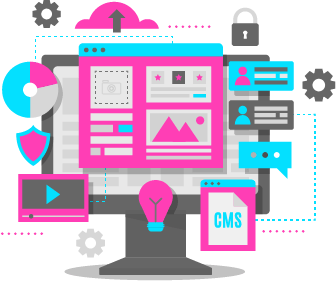SEO strategy for a multi-language website

In today's market, having a website in several languages is an essential step in overcoming the more immediate barriers getting in the way of your business' growth: the different languages of the different markets. To achieve this, you need to start with a broad in scope - yet precise - marketing strategy. This should include, as a priority, an SEO strategy that helps you to create a multilingual website with two special powers: ranking highly on search engines and converting potential customers.
Contents
- How to create SEO strategies to rank your website in different languages
- How do I translate a website? Should I go for professional translation or can I just get a machine translation of my website?
- What should I pay attention to in my SEO positioning strategy for a multi-language website?
One thing is clear: in the past decade, the business world has all become a bit blurry. In today's world, uncertainty may reign supreme, but the opportunity to stand out from the crowd is also there for the taking; you need to overcome traditional barriers - language barriers - with a multilingual website and a top-notch SEO strategy.
And if you want to leap over these barriers with the agility of a gazelle, nothing beats having a solid plan in place. This plan can be reduced to a series of guiding principles related to international marketing on the one hand, and good professional translation practices on the other.
How to create SEO strategies to rank your website in different languages
This is neither the time nor the place to delve into the intricacies of an SEO strategy in a broader sense (which is what it deserves); we're going to take it as given that you know how important online visibility is for your business, and that you've got a robust positioning strategy in place. And also, that you already know that whatever SEO techniques you're working on in your source market also need to be a part of any international expansion of your business.
Translating your website content is an absolutely key element of any international SEO strategy or initiative to expand into new markets. But really, translation is just one aspect of any brand's international marketing campaign. And to a degree - if you're supported by a professional agency - it can even be the simplest of tasks.
There are two other major issues surrounding - and complementing - the translation, and you should always take them into account:
- Your international strategy, in a broader sense: this involves choosing markets, creating a brand image adapted to each of the markets, and the communications criteria in each case.
- Technical SEO techniques: in other words, all those elements you need to think about so that the search engine crawlers can understand which market and language certain content is aimed at.
Later on, we'll delve into these two aspects of strong multilingual SEO, but for now… what languages should you translate into, and how do you do it?
Do I need to translate my website into the language of each market I'm targeting?
It's one of the most common questions are customers ask us, and our answer is almost always the same: “only into the languages spoken in the markets you want to sell to” 😏. In other words, YES. The reasons are clear: your potential customers want to understand what they're reading when they come to shop on your site, and if possible, understand it without having to translate anything.
On the other hand, as always, there's a certain amount of leeway. It depends on your type of product or service, the maturity of your project and other considerations. For example, you could always start with a translation into English only, introducing yourself to the world, and expand into other languages as your project becomes more established. Or just translate some parts.
On the other hand, if what you offer is aimed at a specific world region, you might want to have your website translated into several, very specific languages. If you want to expand into Eastern Europe, it will be the Slavic languages; but if you've got your sights set on Latin America, you'll also need to have a specific search engine optimisation strategy and 'translation' (or adaptation) to make sure it doesn't sound 'strange' to your new market.
How do I translate a website? Should I go for professional translation or can I just get a machine translation of my website?
As we mentioned before, translating the content of your website can be an utter nightmare or as simple as enlisting the services of the professionals.
And an automatic translation? It might be tempting - because of time or cost constraints - to use Google Translate or DeepL to dump content in several languages onto your website; the problem is that if you do so, you're risking the result being a mess of mistakes that could well damage your brand image (the kind that make your website famous - for all the wrong reasons).
To get the best results, the translation industry has devised semi-automated workflows in which machines are in charge of managing large volumes of work and carrying out the more repetitive parts. This leaves the bits a good old-fashioned organic brain can't be beaten on to the humans: translate and localise content according to the target market.
Translation software with AT-WST proxy technology
The translation proxy is a high-tech solution that makes a huge difference to the way large and dynamic websites and web pages are translated; or rather, any website that is constantly being updated and growing, with A LOT of words and several languages involved.
The proxy (in our case, we're talking about our proprietary AT-WST software) is an intermediary between your native website and the translated versions. The proxy detects new untranslated content in your CMS, e-commerce or whatever platform you're using, automatically sends it to the translators and, once the content is translated, publishes it on the website, automatically. All this without you, the customer, having to think about the design or SEO. The software takes care of everything! All you need to do is create content in a single language.
What are the key features of our AT-WST proxy technology?
The software harnesses proxy technology to automate the translation process of our customers' web pages. With AT-WST, all you need to worry about is writing your content (via your CMS) in one language, and the software automatically detects the new content. We'll then manage the translation, and once it's been finalised by our native translators, AT-WST publishes the content on your website in all languages, with optimised SEO.
Main advantages:
- Create content in one language only.
- New content is detected and updated automatically.
- SEO guidelines.
- Option of using this technology for payment gateways and private areas.
- Reduced time to market.
- Reduced internal workload for customers.
- Quickly and easily scaled for other languages.
- AT-WST is compatible with any CMS.
Translating a CMS with a native connector
This is another technology based on the same principle of automation, but with different characteristics. Plugins are effectively corridors between your CMS and our translation services.
When installed, the connectors - in the form of plugins - will show up as available on your content management platform (virtually any; if it doesn't exist, we'll create one) and you can open a small menu for translation workflow management. If you only want to translate some of the content, and monitor the results in detail, this is your best bet.
What should I pay attention to in my SEO positioning strategy for a multi-language website?
If in the end you decide to put your website translation in the hands of professional translators (a wise decision!), you'll have more time to drill down on your SEO strategy, making sure it's tailored to your business. Because that's really what it's all about: to define criteria and take care of the details, thus optimising results.
Next, we'll look at some of the more strategic aspects of international SEO. And you need to think about all of them before, during and after translating your website. In many cases you'll need to keep tweaking things based on the results or SEO audits your international marketing agency are working on.
Knowing your target audience in each market
The first thing you need to know when you're creating strong SEO strategies is who you want to target. This may well sound excessive if you're thinking your target market is simply 'the same as here, but speaking a different language'; but it's a major mistake to take it as given that the features of your target audience don't change along with the language...
Because the truth is, it's not just a different language; it's a different culture, and with that comes a whole different mindset. So, it's (very) likely that your potential customers have different needs, expectations and motivations (aside from other variables such as age or socioeconomic profile), as well as differences in terms of the most effective way to approach them.
Do your (keyword) research
Keyword research is still a fundamental SEO technique, whether international or not. Doing a thorough analysis is essential. It's far too easy to fall into the trap of making the linguistic mistake of thinking English is the same whether you're in London or Sydney…
Here's a real life example. What works better as a keyword in the UK, pants or trousers? Well, it depends... are you talking trousers or underwear? But if you also sell to the USA, it's important to specify. If you've got a website in several languages, these are the kind of details you should be interested in. VERY interested...
Adapt content to each market: translate, localize or transcreate... Which is best?
When you're setting up a website in several languages, the same old question always arises. Do you need a 'straight' translation, or something else?; basically, localise your content or get a transcreation. What’s it all about?
Basically, localisation consists of adapting content to the local market so that it doesn't look 'foreign'. This involves everything related to the form (the page layout), standards (localising currencies is a good example) and cultural issues (colours, taboo words, etc.). Transcreation goes one step further, focusing on recreating the original message creatively, and in a culturally relevant way for this new audience. Making sure the meaning sounds the same as your original message could well involve major changes to your website content. For example, if your slogan in English is "Unlock the power within, and let our technology guide your journey", the transcreation into Spanish would be "Libera tu potencial interior y deja que nuestra tecnología guíe tu viaje" (which literally translates as 'Liberate your inner power and let our technology guide your trip'). The adaptation hones in on the idea of empowerment ("Unlock the power within") but has been formulated in a way that sounds attractive to the Spanish audience. The word "unlock" has been translated as "liberar", and the term "viaje" is used for "journey", as it evokes a more personal and emotional feeling in the Spanish context. Transcreation looks beyond the linguistic differences, also examining cultural preferences and the specifics of the target market.
So, which is best? It depends, but no serious internationalisation process is complete without a thorough look at these different facets of translation; you need to research your target market in sufficient detail (or ask the experts) in order to know what type of adaptations you need to make.
Do URLs have an impact the organic website ranking, internationally speaking?
Whilst the structure of your URL will have something of a bearing on SEO, there are much more important things to consider if you want to improve your international website ranking. Content quality, keyword relevance, user experience, and domain authority are all key aspects. Content written in an original way (not using AI), which is well optimised and of value to users, combined with user-friendly navigation, all works in our favour in terms of visibility in search results. Internationalising content and adapting to local search trends also both play a crucial role. Choosing the right URL may be important to an extent, but it's essential to have an overarching SEO strategy that tackles these key factors to make a strong impact on the visibility of your website internationally.
How can I show Google I've got a multi-language website?
Our AT-WST proxy technology automatically adds a couple of very useful tags for any multilingual website or multilingual web page. Your webmaster won't get the usual headaches about duplications and confused code. It will be clear as day to the search engines which market, region or locale your web pages are aimed at.
The hreflang tag is perhaps the most powerful tool you can use to tell Google (how?) your pages aren't repeating content, but rather have different web pages that need to appear in searches in other languages or specific countries. It's extremely important that each page correctly includes the “hreflang” tag in the header for each version. Here are some examples of this coding:
<link rel=“alternate” hreflang=“en” href=“https://www.at-ls.com/en/”/>
<link rel=“alternate” hreflang=“fr” href=“https://www.at-ls.com/fr/”/>
The first line of code would point to the English page and the second to the French page. That would be the configuration for the Home page. However, different regions' About Us pages, for example, would be:
<link rel=“alternate” hreflang=“en” href=https://www.at-ls.com/en/en-gb/who-we-are/”>
<link rel=“alternate” hreflang=“fr” href=“https://www.at-ls.com/en/en-us/who-we-are/”>
The corresponding tag or URL indicates the regional versions of the website in the same language, showing it's the same content (in this case, UK and US variants of English).
Meanwhile, the rel=canonical tag tells Google (how?) that, regardless of the language the user wants to see, the most important page is the one in the main language. Remember, the rel=canonical tag was created to be used on duplicate pages in order to avoid being penalised by Google. No need to go over the top, but it's useful.
<link rel=»alternate» href=»https://www.at-ls.com/en/» hreflang=»es»>
<link rel=»alternate» href=»https://www.at-ls.com/en/» hreflang=»en»>
<link rel=»canonical» href=»https://www.at-ls.com/en/»>
In the example of the English version of our home page, it shows that the Spanish version is not relevant to an English visitor, and Google would then penalise your website ranking; not doing so could render your whole SEO positioning strategy useless.
Remember to include structured data in different languages
Down to the last detail. Use structured data (no doubt you know by now - the easily classifiable information present on a particular web page; the ingredients in a recipe, for example) is a pretty smart trick you can use to optimise your website ranking on the SERPs, provide enriched results and so on. It's a good idea to incorporate them into your SEO strategy.
But with a multilingual website, translating them is imperative. Why? Because this is extremely useful standardised information, used by search engines to understand what your content is about, and know how to classify it in the most efficient way possible. And how will it know? If the language the user is searching with and the language of structured data match. And that's not just going to happen by chance... Now for the good news! AT-WST also translates structured data for the markets indicated.
With more than a couple of decades of experience behind us, you can believe us when we tell you there are a number of ways to develop an SEO strategy for a multilingual website, and they can all be equally effective. But there's no doubt about it. The best approach is a systematic one, starting from well drafted market research which you can then use to guide your steps into the international market.
We're not saying this marketing route map is gospel and can never be changed; on the contrary. It's more than likely that as you implement your SEO strategy you'll be altering some actions from the outset - especially in light of your results. You might, for example, discover a potential market you hadn't thought about, or find specific communications channels.
Put your SEO strategy into practice for a multi-language website!
We know that expanding and taking that first leap into international markets can seem daunting. But get rid of that fear!Maybe it also seems hard to get seen online with a website, AND; sell products and services online, AND... Then there's AT-WST proxy technology, which makes it easier than ever to reach an international audience, translating website content along with technical SEO techniques and elements (meta tags, title, generates hreflang tags, canonical tags, structured data, etc.) to make sure you rank in different markets. And all without getting in a mess!
At ATLS, we can help you through the whole process, from an initial consultancy in the field of international marketing to carrying out audits of results. Not to mention developing a comprehensive SEO strategy for the creation of a multilingual website






